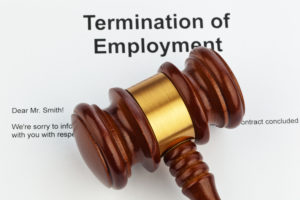Employment Law: Hire the Best, Fire the Rest, and Stay Out of Court

Prior to the National Labor Relations Act in 1935, business owners in the U.S. were accustomed to very little governance in how they treated employees. Since then, many additional labor laws have been enacted, and the legal ramifications of violating them can be costly and detrimental to a company. In an effort to help members avoid an expensive legal mistake, Hunter Lott presented, “Employment Law: Hire the Best, Fire the Rest, and Stay Out of Court” during the May 4th Fridays with Vistage webinar.
 Contrary to what some business owners believe, Hunter says, “The odds of you just walking around as a CEO, as a decision maker, with a sign on your back ‘Please Sue Me’ and someone actually going after you are just relatively small.” According to statistics from the Equal Employment Opportunity Commission (EEOC), there is an 8 in 10,000 chance of being charged with illegal discrimination by an employee, and 66% of those charges get dropped. Although it seems the odds are in the employer’s favor, you don’t want to be one of the “lucky ones” on the losing side of this lottery.
Contrary to what some business owners believe, Hunter says, “The odds of you just walking around as a CEO, as a decision maker, with a sign on your back ‘Please Sue Me’ and someone actually going after you are just relatively small.” According to statistics from the Equal Employment Opportunity Commission (EEOC), there is an 8 in 10,000 chance of being charged with illegal discrimination by an employee, and 66% of those charges get dropped. Although it seems the odds are in the employer’s favor, you don’t want to be one of the “lucky ones” on the losing side of this lottery.
To help avoid charges brought on by employees, owners should first figure out where they are “vulnerable.” Here are the top four things that can get someone sued in today’s business climate:
1. Wage & Hour – “If you want to get sued, start messing with wage and hour,” he says. “If you’ve got a policy that says unauthorized overtime won’t be paid, get rid of it.” Employers must abide by the laws in the Fair Labor Standards Act, which enforces payment to employees who work overtime hours. For protection, consider changing company policy to read, “All overtime must be authorized. Working unauthorized overtime may lead to disciplinary action.” It is also important to know the difference between an employee and an independent contractor, as there can be expensive legal and tax consequences. Click here for a detailed independent contractor description.
2. Retaliation – The most claims filed at the EEOC in the last two years have been for retaliation. If an employee registers a complaint, it is illegal for an employer to fire, demote or punish them in any aspect of their job as a result of the complaint.
3. Sexual Harassment – “Boy you’d think we’d have this down by now,” Lott says. Made illegal in the Civil Rights Act of 1964 and since then continually refined, no man or woman can be sexually harassed in the workplace.
4. “At-Will” Termination – Even though every state but Montana allows for “at-will” terminations, employers need to be careful when using it. It is not an umbrella of protection that allows employers to fire unjustly, and any terminated employee can still claim they were unjustly fired.
To avoid losing in court, he suggests that employers provide excellent documentation of employee performance, corporate culture and hiring practices as well as “well-written handbook policies.” In the handbook, Lott says to “Keep the language permissive rather than mandatory.” If discipline is handed out mandatorily as stated in your handbook, then you lose your ability to make “at-will” decisions on a case-by-case basis. For an example of permissive language, notice the difference in the following sentence if the the term “could” is substituted in place of “shall;” “A pattern of excessive tardiness shall lead to disciplinary action up to and including termination.” Set up a behavioral standard such as: “Maintain a positive work atmosphere by acting and communicating in a manner so that you get along with customers, clients, co-workers and management.” Make sure to consult with legal council to discuss your handbook language.
In regards to social media sites, the National Labor Relations Board states that an employee can be fired if they “post or display comments about coworkers or supervisors or the Employer that are vulgar, obscene, threatening, intimidating, harassing, or a violation of the Employer’s workplace policies against discrimination, harassment, or hostility on account of age, race, religion, sex, ethnicity, nationality, disability or other protected class, status, or characteristic.”
Suggested Readings:
Please Sue Me: The Guide to Safe Hiring and Firing Practices for the Frontline
Category: Performance Management / HR
Tags: Hiring, Hunter Lott, performance management

